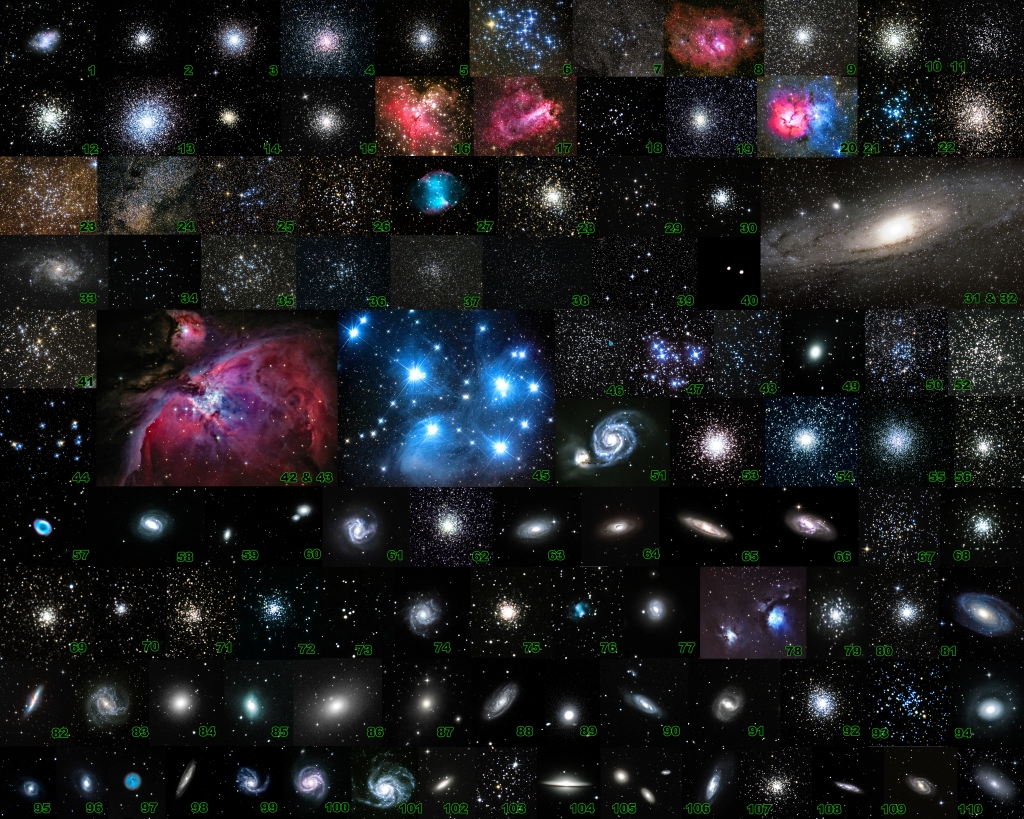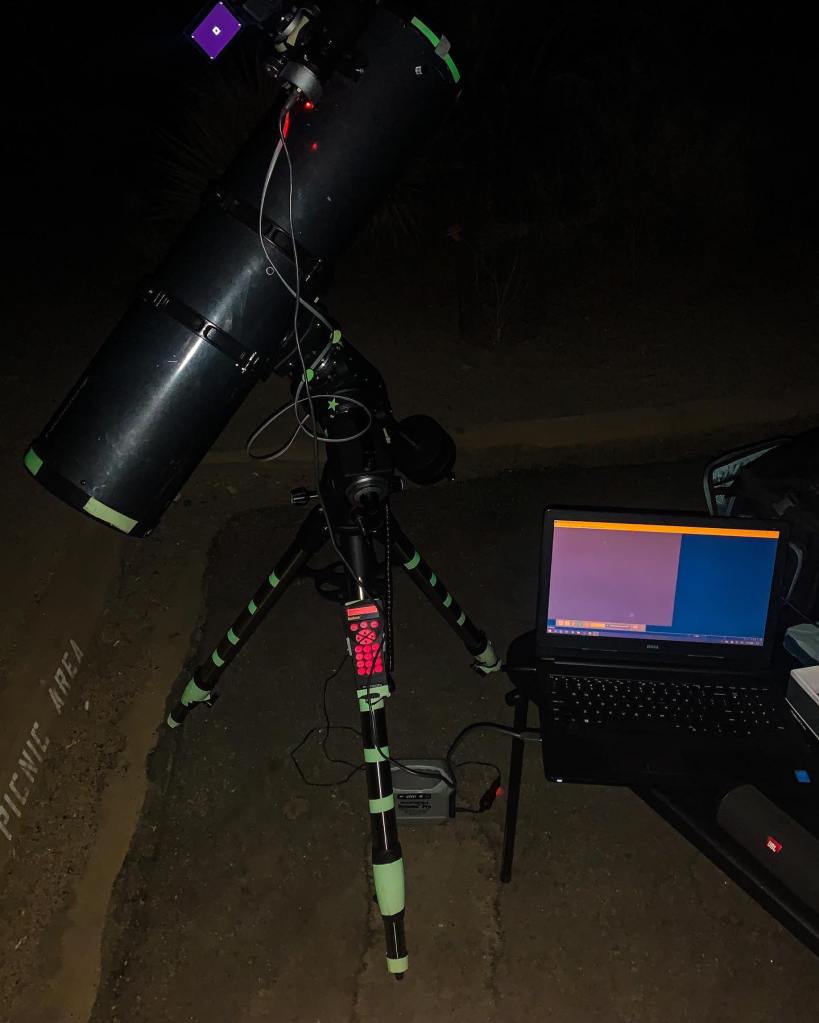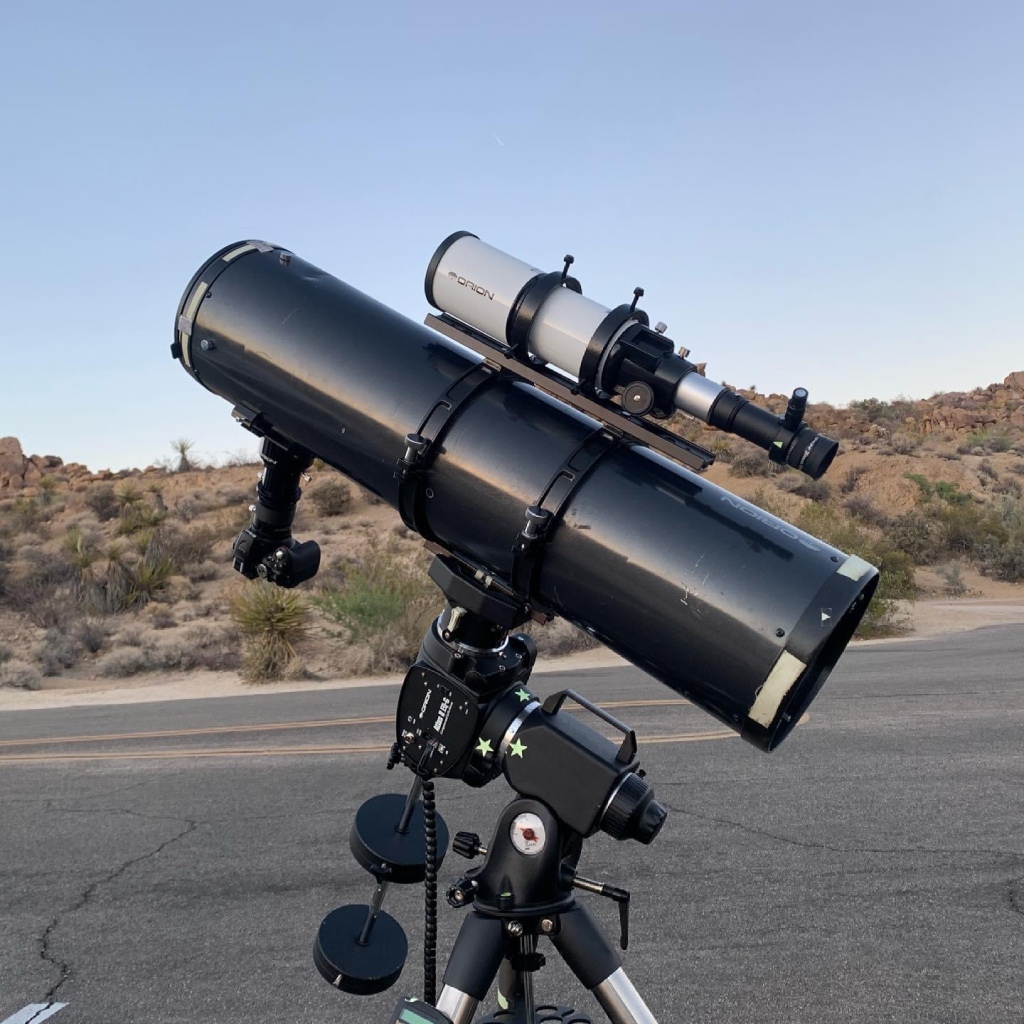From Late 2020 to 2023, I made it a mission to capture every Messier object in the sky through my astrophotography. While I’m sure you’ll find others who have accomplished the same thing, the question is realistically how many – out of millions of amateur astronomers and astrophotographers around the world?

Why did I do it?
My position as a telescope demonstrator at the Observatory opened up the opportunity for me to be paid to shoot astrophotos whenever I went on trips to the California desert. When the Observatory was closed to the public during the pandemic in 2020, we needed to continuing engaging the public online through social media, so they began to share my images. This motivated me to keep taking more trips to the California desert… and by mid 2021, I decided, “let’s capture ALL of the Messier objects.”
How Did I do it?
There is such a thing as a Messier Marathon, where an observer will organize a night where they will try to find as many of the 110 Messier objects as they can during a single night. GoTo telescopes definitely make this test of endurance and will power much more possible – but it still requires careful strategic planning and timing in terms of the “observing order.”
Obviously, shooting all 110 objects isn’t possible in a single night if you want the images to be good quality… astro-images require multiple sub-exposures and stacking the integrated data to reduce the noise and provide a much more clear image. Every image you see in that collage has at least 30 minutes of integrated data (such as the bright open clusters), but the images of galaxies and nebulae that required longer exposure data obviously have more.
But because these were done on single all-night trips once a month around every new moon, there was only so much night time I could spend. And of course, the objects I could shoot were dependent on the time of the year, AND the rotation of the Earth as one season’s section of stars would set and the next season’s set would rise later in the night.
In nearly every telescopic shoot that I do, I focus on objects in sections of the sky that are on the rising side of the sky, high enough above the horizon and a couple hours before crossing the meridian.
And yes… in case I haven’t made that clear… all of these shoots were usually done all night, and yes, I would be tired after every shoot and need an additional day to get my body used to the regular day-night sleep cycle.
What did I use?

The beauty of this project is that all of the objects were captured using the same camera – a Nikon D5300. All but one object was shot using the same 8″ f/4.9 Newtonian Telescope (M24 was shot using a Nikkor 300mm Telephoto Lens), and on an Atlas II EQ-G Mount. For coma correction and field flattening, I used a Baader 2″ MPCC Mark II Coma Corrector, which adapts easily into the 2″ Eyepiece port – which was also replaced. You can click here to learn more about my 8” telescope’s journey to becoming an imaging setup.
Some of the objects such as the Ring Nebula are very small in apparent angular size, so I used a 2X Barlow Lens to achieve a f/10 2000mm focal length rather than the default f/5 1000 mm focal length.
For guiding, usually when shooting at f/5, I’d use the StarShoot Autoguider camera in a 50mm guide scope which did the trick most of the time. But when I needed to shoot at f/10, I eventually got an 80mm short tube refractor to be used as a guide scope on top of the 8″ Newtonian. As long as the scope was properly balanced, I could still achieve anywhere between 3 to 5 minutes of sub exposures without too much issues in guiding or periodic errors in gears.

When did I shoot it?
I got the Atlas II Mount – replacing my original SkyView Pro mount – in late Summer of 2020, and my first night out with it was on September 18-19, 2020. The final object in the quest was captured on June 20, 2023.
The following will list the dates and what Messier objects I shot that night – it does not include the other objects such as Caldwell, Abell, Barnard, or any comets. But you can click on the dates to check out their individual galleries.
The key thing with those dates is that they were around new moon of that respective month.
Some objects will be listed more than once as many of them had multiple attempts… whether I needed to improve a prior effort from before, or tried an object at f/10 rather than f/5 with differing results. Either way, the image on the poster collage is the version I’m happiest with.
| Date | Location | Messier Objects Shot |
| 9/18-19/2020 | JTNP | M33, M35, M45, M42 & M43 (Orion Nebula) |
| 10/19/2020 | JTNP | M31* feat. M32* and M110* (Andromeda Galaxy System) |
| 11/15-16/2020 | JTNP | M47*, M41*, M78, M95 & M96 |
| 1/8-9/2021 | JTNP | M42 & 43 (Orion Nebula), M65 & M66 (part of Leo Triplet), M46*, M81 & M82, M97* & M108* |
| 2/10-11/2021 | JTNP | M5*, M44, M51*, M67*, M84* & M86* (part of Virgo Cluster), M88* & M91*, M101*, M109* |
| 3/13-14/2021 | JTNP | M53*, M83*, M104, M105* |
| 4/9-10/2021 | JTNP | M3*, M4, M13, M64*, M100, |
| 5/8-9/2021 | JTNP | M6, M7*, M8*, M10, M16, M20 & M21 |
| 5/12-13/2021 | JTNP | M13, M22*, M27*, M29*, M57 |
| 6/12-13/2021 | JTNP | M15*, M39*, M33*, M52* |
| 7/15-16/2021 | JTNP | M2*, M11*, M34*, M103* |
| 8/12-13/2021 | JTNP | M17*, M36*, M38* |
| 10/5-6/2021 | JTNP | M1, M31 M32 and M110 (Andromeda Galaxy system), M35*, M37*, M42* & 43*, M45* |
| 12/5-6/2021 | Rice, CA | M48*, M50*, M81* & 82*, M78*, M95*, M96*, M105 |
| 3/1-2/2022 | Rice, CA | M12, M13*, M14*, M49*, M58*, M59* & M60*, M63*, M85*, M89* & M90*, M92*, M94*, M106*, M107*, |
| 4/4-5/2022 | JTNP | M9*, M19*, M23*, M25*, M56*, M62*, M80*, M87*, M98*, M99*, M102* |
| 4/29-30/2022 | JTNP | M13, M18*, M26*, M28*, M40*, M68*, M69*, M70*, M104* |
| 10/27-28/2022 | JTNP | M1*, M30*, M77*, M74*, M79*, M76* |
| 3/24-25/2023 | JTNP | M65* & M66* (part of Leo Triplet), M44*, M100* |
| 4/21-22/2023 | JTNP | M3, M5, M57*, M24*, M71* |
| 5/22/2023 | Ghost Ranch, NM | M4*, M6*, M20*, M39*, M54*, M55* |
| 6/20-21/2023 | JTNP | M10*, M12*, M21*, M22*, M16*, M72*, M73*, and M75*. |
So What’s Next?
Eventually I will start getting a dedicated astrophotography CCD camera for the telescope, before I Invest in a catadioptric telescope with a longer focal length – and thus use my Nikon mainly for wide angle landscape and constellation shots.
There are definitely some objects that I still feel like that need to be reshot and made better… especially the objects that are smaller in angular size that require longer focal lengths. Plus I think eventually I will do all the Caldwell objects as well, but that will require some trips further south as there are at least two dozen Caldwell objects that are located in declinations too far south to be observed and imaged from Southern California!


